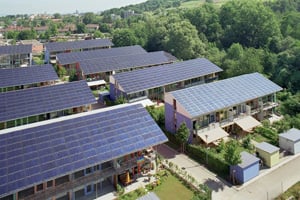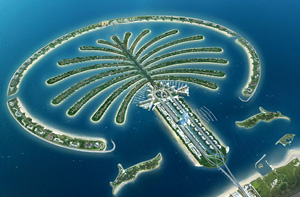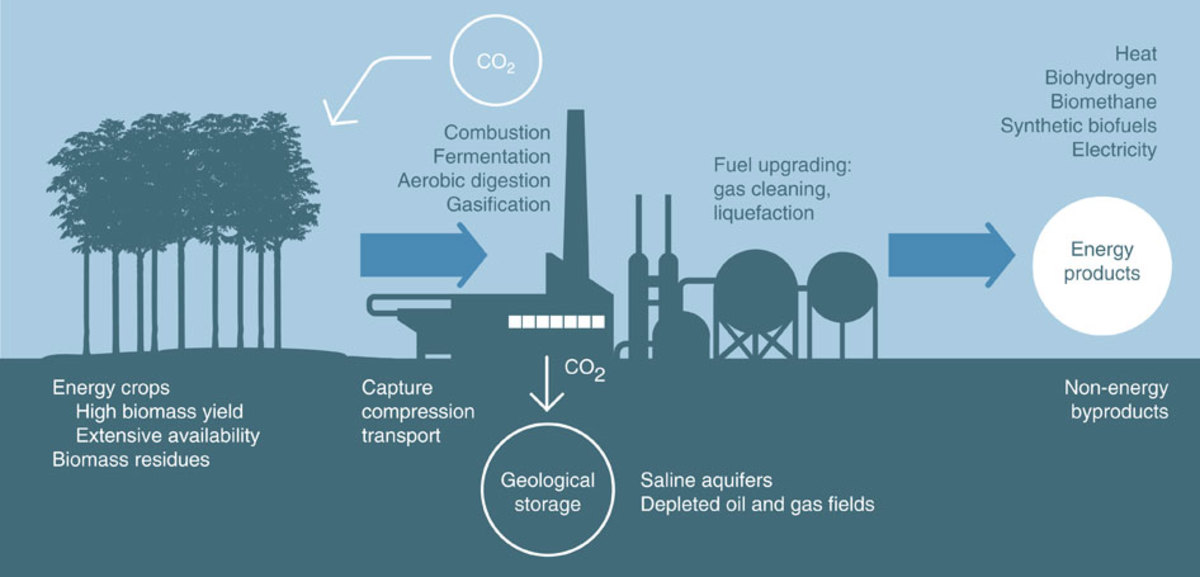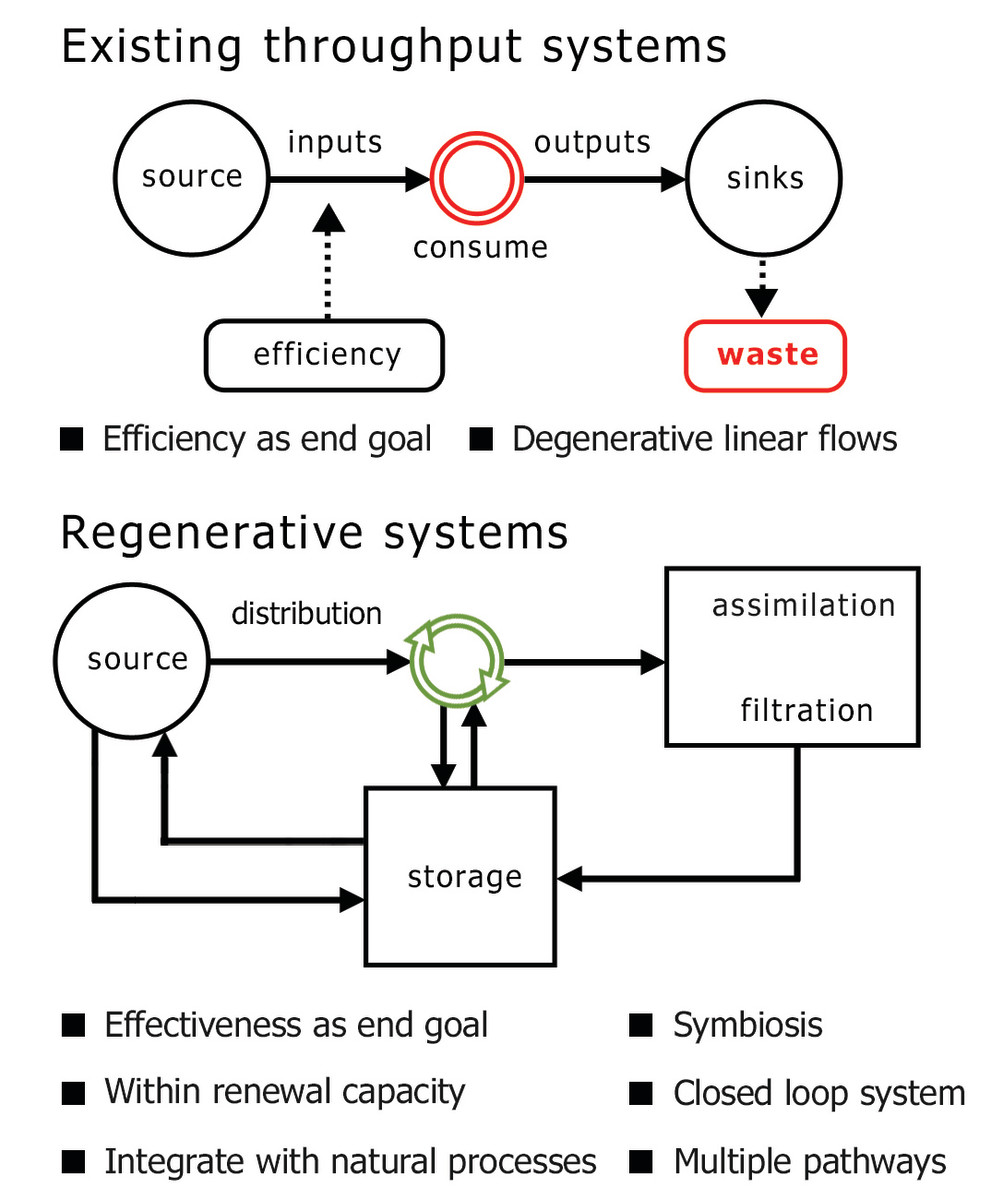Notes on Sustainable Design
What is Sustainability?
As the World’s supplies of oil start to run out during the first few decades of the Twenty First Century people are going to start taking the ideas of sustainable design more seriously. It is an all embracing philosophy that impacts on many different areas of human endeavour from architecture to agriculture.
If you imagine a sustainable forest you will understand the notion of sustainability better. In a forest that is sustainably managed trees are selectively cut down at a rate that does not negatively impact on the health or area of the forest. Biodiversity is maintained and the total number of trees is kept within an acceptable number. By making the forestry business sustainable it can be continued indefinitely baring an act of God.

Measuring Sustainability
And so it is with sustainable design. It is creating a product, building
or service that can be created and replicated without causing an
overall decrease in resources or an overall increase in pollution that
will threaten the stability of the process.
Although the ways of empirically measuring sustainability are improving
it still remains a challenge to accurately measure certain factors. For
example, when looking at the sustainability of a product a carbon value
has to be assigned to the entire process from the cradle to the grave.
This means assessing the damage caused by mining for minerals and ores,
transportation costs, manufacturing costs, advertising costs, the life
span of the products use and then finally the carbon cost of disposing
of the unwanted product at the end of its life. When you look at the
bigger carbon picture you begin to realize that there is no such thing
as a sustainable car – the immense amount of resources needed to make an
electric or hybrid car can never be equal to the sum of reduced carbon
emissions for the 10 or 20 years the car is used. And perhaps the
scraping of the car further increases the carbon costs of the vehicle.
Arhitecture and Agriculture
The goal of sustainable architecture is to create houses that can be
‘unplugged’ - namely houses that do not need power from an outside
source. This is an honest and easy to understand agenda. Unlike the
fallacy of the green car, the green house is a reality. The architect
Rolf Disch between 2000 and 2005 built a solar settlement in Freiburg,
Germany. This solar settlement is composed of 59 houses with
photovoltaic cells on the roofs. These houses are not only ‘unplugged’
they create an energy surplus that can be used to balance out other
carbon costs. Every house in the Solar Settlement produces a yearly
surplus of €4,000.
In 2007 one third of the world’s workers were employed in agriculture.
This statistic is a bit skewed because only a handful of people in
America produce the billions of tons of grain and soy grown on the
continent. It is only in the last 50 years or so with massive population
growth and developments in genetic engineering that agriculture has
stopped being sustainable. Planting acres and acres of the same crop has
produced pests and the pests have called for the invention of petroleum
based pesticides. The crops are sprayed from the air and huge machines
have mechanized every aspect of agri-business. The developed world has
‘plugged’ in agriculture so successfully that unplugging it seems
impossible. Contrast this type of agriculture with the type practiced in
poorer places in the world where agriculture is labor intensive and
free of petro-chemical fertilizers and pesticides, where water buffalo
are still used and where the idea of crop rotation is part of the
survival lore of the community. This type of agriculture is approaching
sustainable levels. It is drought, pollution, climate change and
population increase that threatens to destroy the sustainable nature of
such agriculture.
One of the key components of sustainable practice has become water. This
is perhaps our most precious natural resource and is one that we are
guilty of using with profligacy. Water underpins all efforts at
sustainability. It is now possible to measure the embedded water cost of
products. One pound of cotton (whether it is organic or not) takes 101
gallons of water to produce. One ton of steel costs 62,000 gallons of
water. These are sobering figures when you consider the world’s
freshwater supplies are already perilously close to being outstripped by
demand. Already ground water supplies are running low, as are fossil
water supplies. Water experts predict India will be the first country to
see chronic water shortages: already every year millions of wells are
dug in search of new reserves of ground water. The country simply cannot
support a population exceeding 1 billion people.
Sustainability uses watershed assessment to look at water. The goal of
sustainable water use is to measure the total amount of precipitation
landing on the surface of a community and using this figure to determine
the number of people who can live in that community in a sustainable
manner.

Unplugging and Dubai
Green interior design is part of sustainable design. It has picked up on
many of the concerns of the sustainable movement such as energy
efficiency, water conservation, reduction in carbon emissions and
careful use of natural resources. The goal of green interior design fits
in with the sustainable mantra of the triple bottom line – people,
planet and profits. Green interior design seeks to make interiors safer
for human habitation, to reduce the water and carbon footprint of a
house and to convert energy and water efficiency into monetary savings.
Green interior design is one small piece of the sustainable jigsaw that
is in some ways a microcosm of the entire drive to ‘unplug’.
Finally, the notion of unplugging brings up the importance of
alternative sources of energy such as solar energy and wind energy.
Green energy is perhaps the key to uncoupling our existence from the
destructive influence of fossil fuels. If we can make carbon free
energy, then half the battle is won.
In the last 50 years small and obscure villages such as Dubai and
Shenzhen have exploded into megatropolis status. Dubai in particular is a
great example of a place which is entirely without sustainable merit.
Everything is paid for and powered by oil. Drinking water is produced by
costly desalination, skyscrapers litter the skyline, artificial beach
suburbs are built and all the food is imported. Nothing is recycled and
nothing is grown. There isn’t a single solar panel to be found despite
the scorching heat. Dubai strives to have the tallest building. The
irony of man seeking to reach the level of God is surely not lost on
most casual observers. Dubai is Babel. And just as those original
biblical tower builders were blinded by their hubris so the powers that
be in Dubai are willfully ignoring the truth of sustainability. When the
oil runs out the city will die and in just a few decades the desert
will reclaim Dubai until just a few traces of mangled steel are visible
just like the broken statue of Ozymandias:
“And on the pedestal these words appear:
`My name is Ozymandias, King of Kings:
Look on my works, ye mighty, and despair!'
Nothing beside remains. Round the decay
Of that colossal wreck, boundless and bare,
The lone and level sands stretch far away".
More Green Hubs
- The Dream of the Sustainable House
Is sustainable housing really possible? - Sustainable Flooring and Green Interior Design
Green interior design is guided by metrics codified by LEED (Leadership in Energy and Environmental Design), a body set up by the US Green Building Council to accredit green interior designers. - VOCs in the Home
One of the lesser known evil off-sprouts of the petroleum empire that has the planet at its mercy is VOCs or Volatile Organic Compounds. - Water Supply Crisis
1.3 billion people have no access to clean water and 2.5 billion lack adequate sewage or sanitation. The demand for water doubles every 20 years. At this rate, demand for fresh water will outpace supply by 50% in less than 20 years. - Act Now To Stop Another Oil Spill Disaster
Watching the scenes of the devastating oil spill in the Gulf of Mexico has surely made many people realize the risks and hazards the world faces in maintaining its present addiction to oil consumption. - The Importance of Re-Purposing
The term re-purposing has recently entered the popular lexicon along with the term upcycle. Both these two words connote important new ideas about recycling. - How to Reduce Your Home Electricity Bills
The average family in the USA spends $2,200 a year on energy bills. A lot of these dollars are wasted. This article is about what you can do to reduce the waste in electricity use in your home. - Green Gift Ideas
Whether you do your Christmas shopping early or leave it to the last moment it is often not easy to find a great present for a friend or family member. It seems there is so much choice and yet nothing really stands out. - Why Do So Many People Have Allergies
When I was a child I remember very few people had allergies or asthma. Now it seems everyone around me has either an allergy or asthma. - Before You Buy a Hardwood Floor Consider This
Before you buy a hardwood floor you should consider the future health of the planet. Every second an acre and a half of rainforest is cut down. In 40 years there will be no rainforests left. - Planned Obsolescence
Until recently companies did not see that it was in their interest to build products that last forever. If they did sell a product that never wore out or broke they would quickly run out of customers. - What is Green Interior Design
Green interior design is about what is good and what is bad for peoples health, for the environment and for saving energy. Of course fashion is a big part of green interior design BUT it is not the most important thing.











